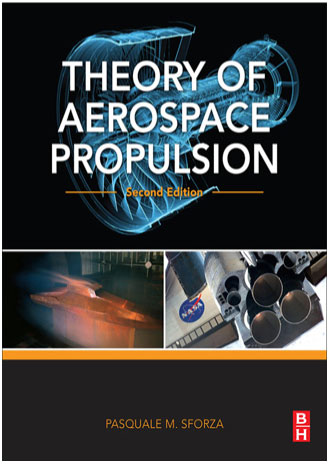
There are many textbooks on the topic of propulsion; most have general coverage of propulsion concepts with some applications. This book covers all the basic theory of areas related to aerospace propulsion, which includes basic concepts, air-breathing engines, rocket motors and space propulsion.
The authors have managed to write a book in a manner where students can learn all the concepts from basic to advance in a one-stop location in form of this book. The book has been published with 13 varied chapters, covering the whole spectrum of propulsion. The author, Pasquale M. Sforza, is Professor Emeritus at the University of Florida and has spent his career working in areas related to propulsion.
The coverage of the book is rather comprehensive in the context of computational propulsion. Chapter 1 of the book deals with principles of propulsion and explains how different engines are classified. This chapter has been written in way that students can understand all propulsion concepts. Chapter 2 explains further concepts related to area of propulsion including conservation concepts. A whole chapter has been devoted to explanation of concepts and calculation of ideal cycle of jet propulsion engine. This topic is fairly important for understanding of each component of jet propulsion engine, and Chapter 3 adequately deals with this. Figures and tables used to explain ideal cycle calculation are insightful and easy to understand.
Chapters 4–7 of the book deal with detailed operation and calculations of the combustion chamber, nozzle, inlet, compressor and turbines. Different nozzle types are also explained to deliver detailed knowledge on the topic. The chapter on the combustor also includes the basics of combustion and its calculations, which are an essential part of combustor performance. The design process of inlets and their types is also covered in Chapter 6. Chapter 8 deals with blade forces, efficiencies, heat transfer, boundary layer and compressibility effects of using axial flow turbomachinery. Though it is good to have all these aspects covered, in the reviewer’s view, this chapter is a kind of sub-section of the previous chapter.
Chapter 9 deals with aspects related to the overall performance and integration of different components to form a gas turbine. In addition, it also deals with overall aspects including costs, specific fuel consumption (SFC) and fuel systems and thrust monitoring. These aspects are important from an overall understanding point of view, though it is felt that title of this chapter could have been clearer. Chapter 10 deals with different types of propellers. Chapters 11–13 deals with liquid and solid propellant motors and space propulsion. Basic concepts of rocket motors and their configurations are discussed in detail in these chapters. Different types of space propulsion systems are presented clearly in this book. Innovatively this also includes nuclear propulsion devices.
I strongly recommend this textbook for aeronautical or aerospace students at either the undergraduate or postgraduate level. Aerospace researchers/engineers will also find it useful as a handbook on all basics. This comprehensive book can be used by those with little background in propulsion as a self-contained learning material. For those who already have some background in the fundamental topics related to propulsion, they will find the applied nature and the unique features interesting in relation to aerospace propulsion. As a reviewer, I can recommend Chapters 1–3 for a basic understanding of aerospace propulsion as it deals with the knowledge required from undergraduate students.


